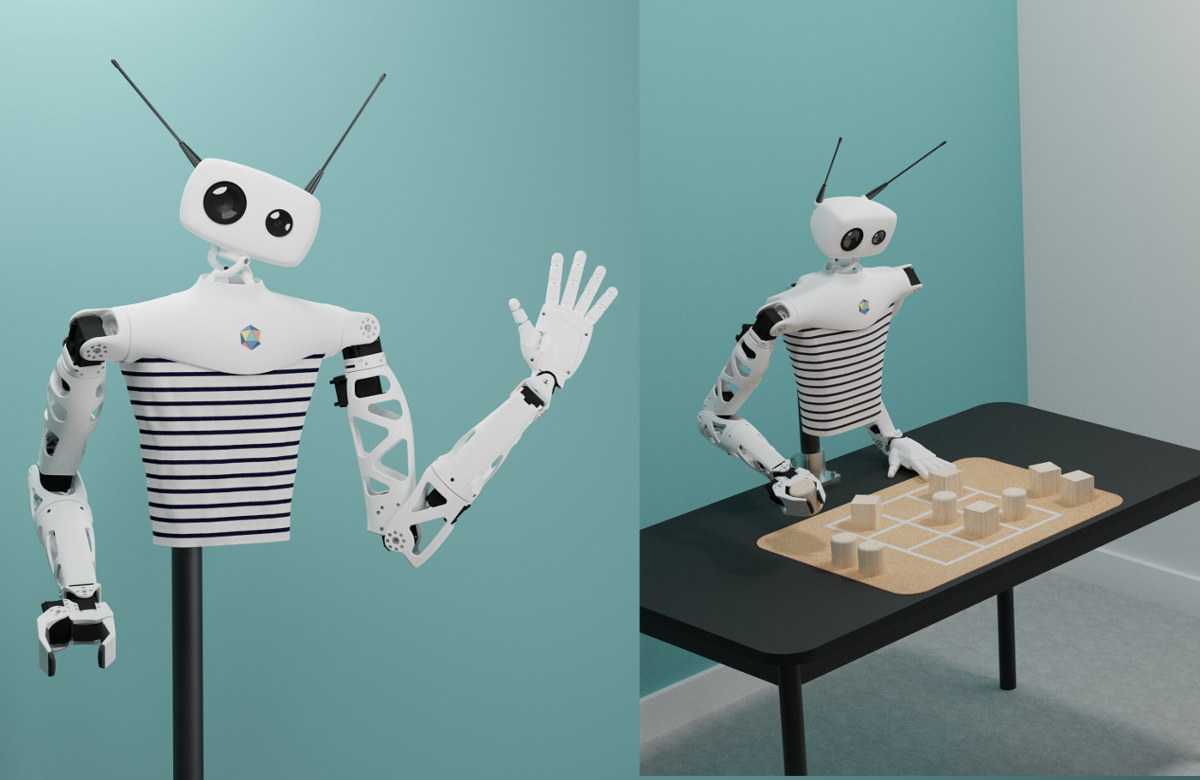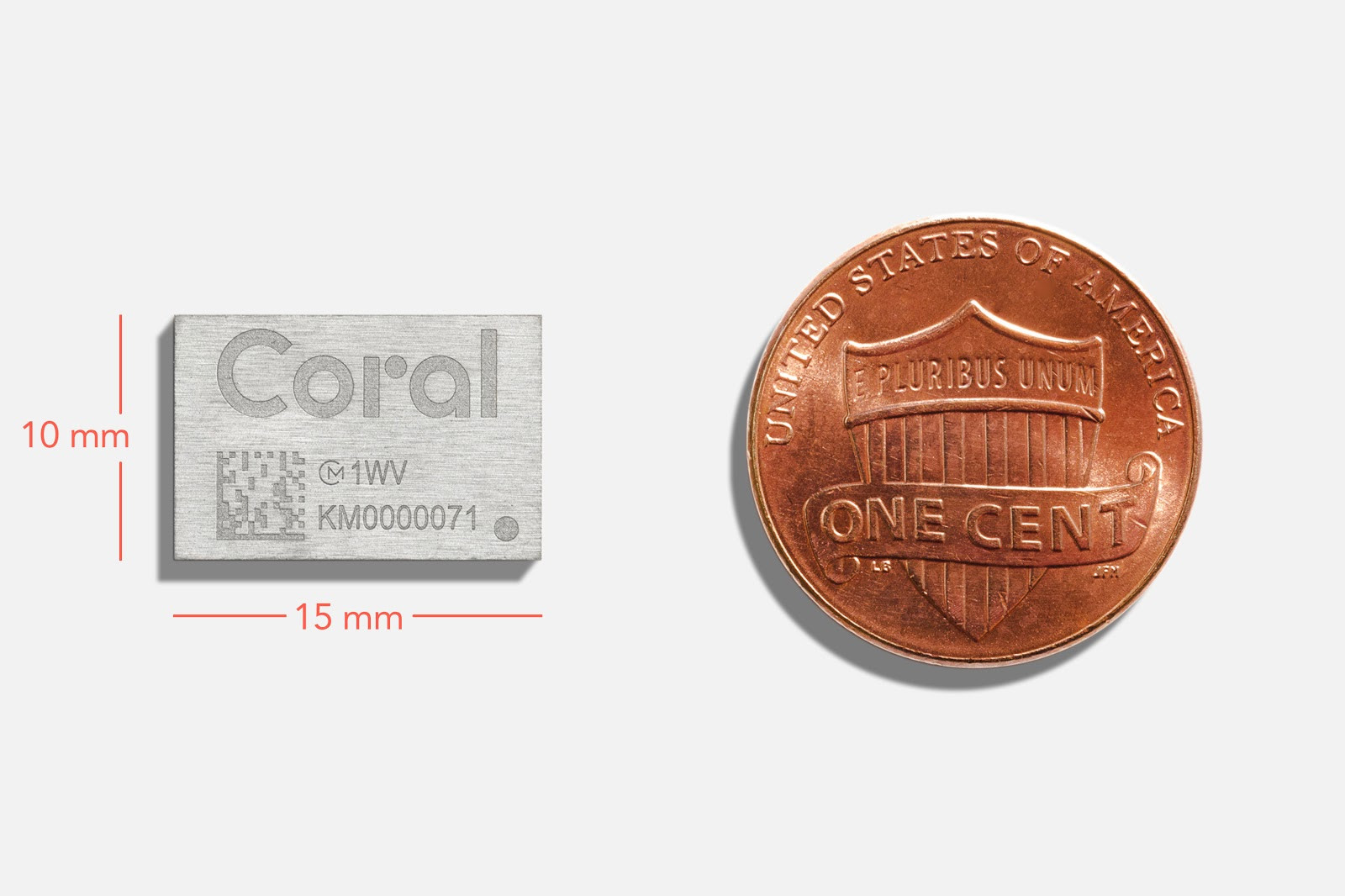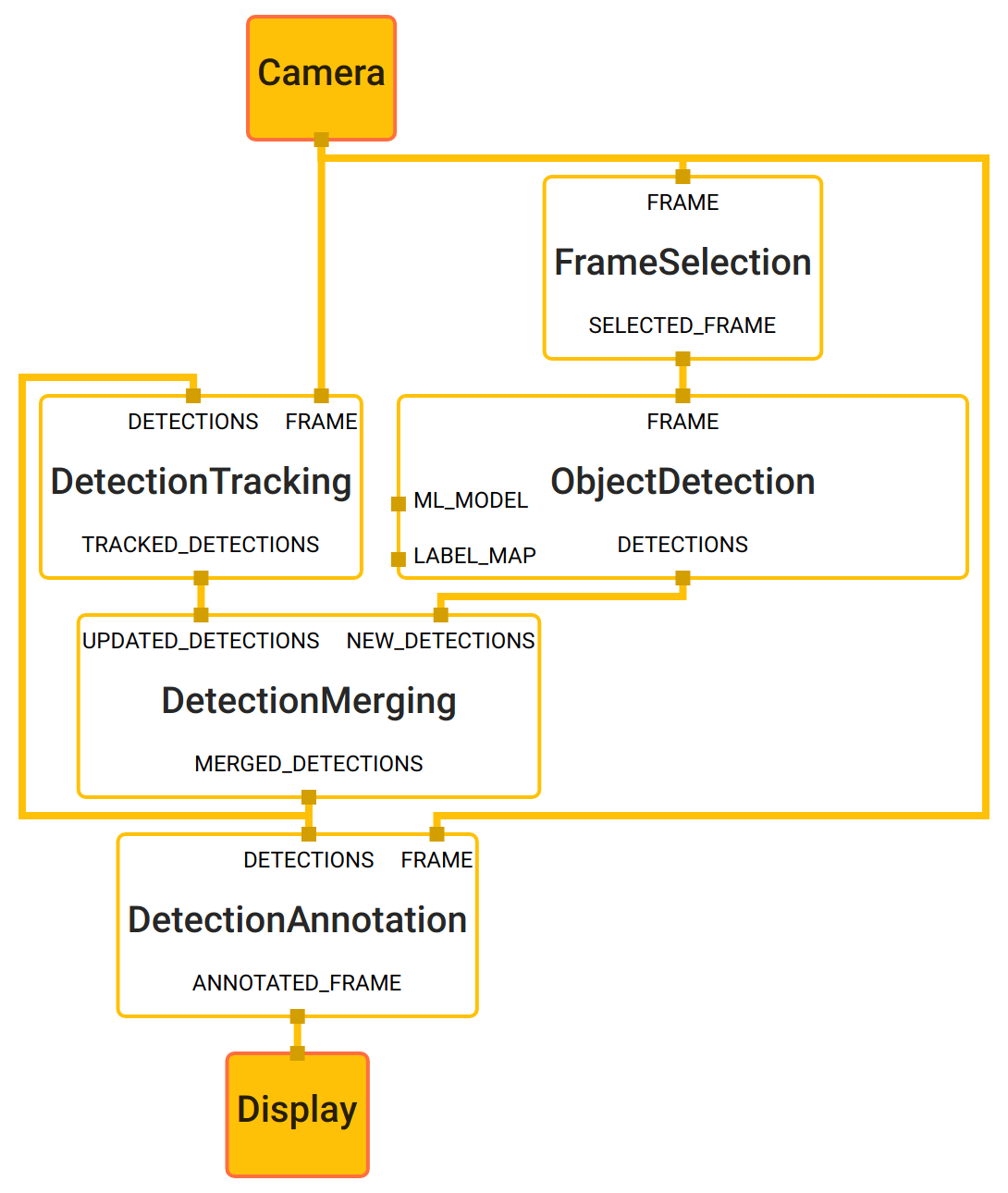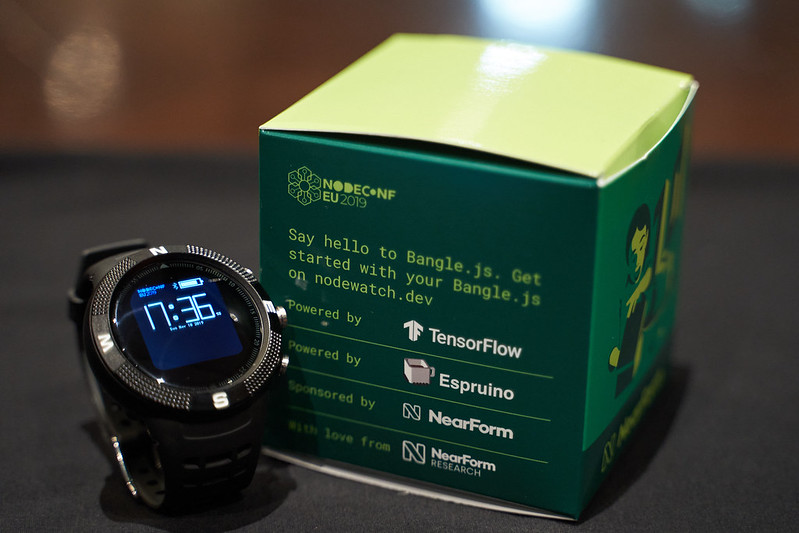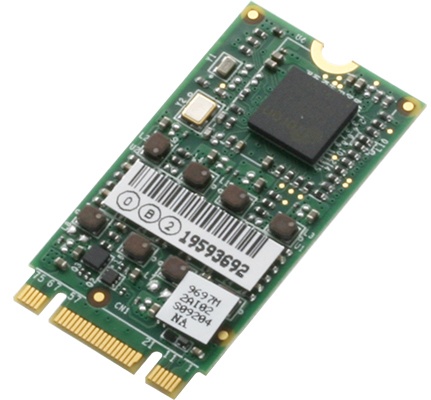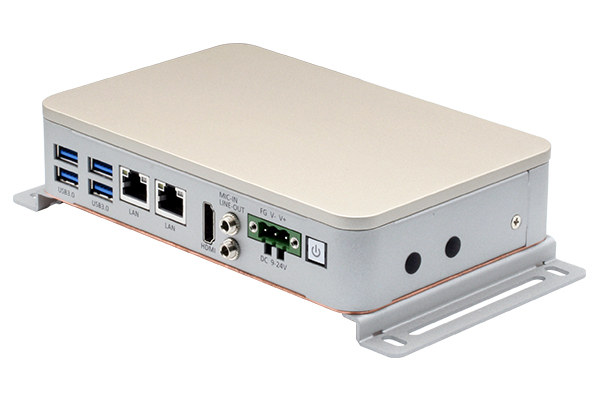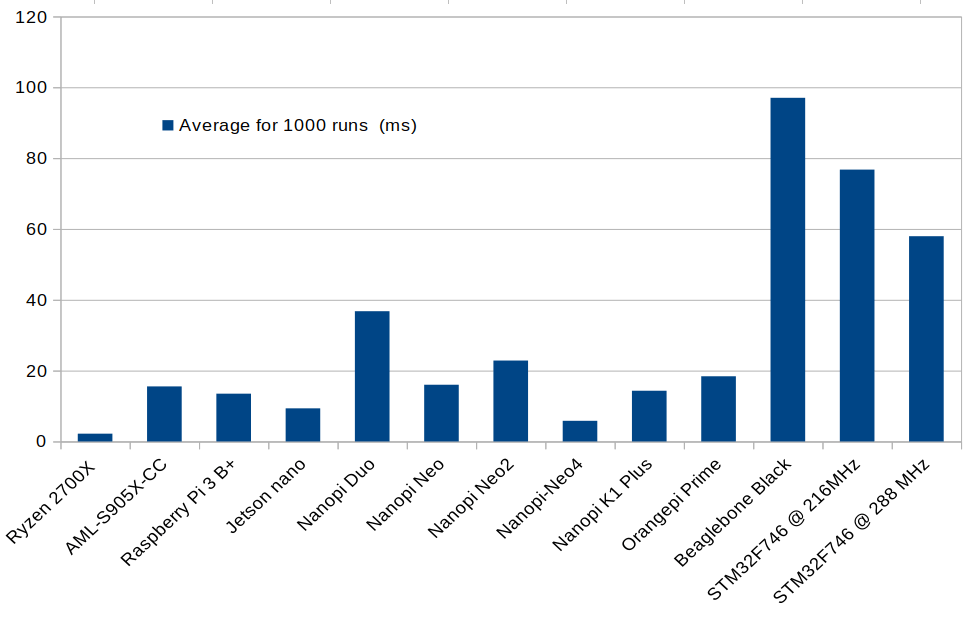Shenzhen Wesion released the NPU toolkit for Khadas VIM3/VIM3L last November, so I decided to try the latest Ubuntu 18.04 image and the NPU toolkit on Khadas VIM3L, before switching to VIM3 for reasons I’ll explain below. I’ve followed two tutorials from the forum and wiki to run pre-built samples and then building a firmware image and samples from source. Khadas VIM3L and VIM3 Have Different & Optional NPUs This will be obvious to anyone who read the specs for Khadas VIM3 and VIM3L that the former comes with a 5 TOPS NPU, while the one in the latter only delivers up to 1.2 TOPS. But somehow, I forgot about this, and assume both had the same NPU making VIM3L more attractive but this type of task, Obviously I was wrong. But the real reason I stopped using Khadas VIM3L can be seen in the photo below. My board is […]
Raspberry Pi 4 Powered Open Source Hardware Robot Paves the Way for Robot Maids
Eventually, we all expect robots to do chores and other manual tasks performed by humans such as preparing and serving food at restaurants, carry objects over rough terrain as opposed to just inside the warehouse with a flat floor, or even moves pieces on a chessboard when other humans are no here to play with us. I’m fully expecting to eventually own a robot maid of sorts to wash dishes, mop the floors, and perform other tasks on my behalf. We are not there yet, but Raspberry Pi 4 powered Pollen Robotics’ Reachy open source-hardware robot is getting us closer to the goal as it can handle small objects and via two robotic arms and a dual-camera head, and can also interact with humans using a microphone and a speaker. Key features and specifications of Reachy robot: Main body SBC – Raspberry Pi 4 SBC with 2GB according to a […]
Google Coral mPCIe and M.2 Cards for Sale, New Coral Dev Board Mini and Modules Coming in 2020
Google introduced Coral development board and USB accelerator with Google Edge TPU last year. The development board was comprised of a baseboard and Coral system-on-module with an NXP i.MX 8M quad-core Arm Cortex-A53 processor and the Edge TPU. Since then ASUS announced Tinker Edge T and CR1S-CM-A SBC based on the Coral module, and yesterday, I noticed Seeed Studio started selling mPCIe and M.2 AI accelerator card with Google Edge TPU, while today, Google announced upcoming Coral products for 2020. Coral Mini PCIe and M.2 Accelerators Coral Mini PCIe card specifications: Half-mini PCIe card with PCIe Gen2 x1 Supply voltage – 3.3VDC +/- 10 % Dimensions – 30.00 x 26.80 x 2.55 mm Weight – 3.6 g Temperature Range – Storage: -40 ~ 85°C; operating: -20 ~ 70°C Relative humidity – 0 ~ 100% (non-condensing) Op-shock – 100 G, 11ms (persistent); 1000 G, 0.5 ms (stress); 1000 G, 1.0 ms […]
MediaPipe is an Open Source Perception Pipeline Framework Developed by Google
MediaPipe is an open-source perception pipeline framework introduced by Google, which helps to build multi-modal machine learning pipelines. A developer can build a prototype, without really getting into writing machine learning algorithms and models, by using existing components. This framework can be used for various vision & media processing applications (especially in VR) such as Object Detection, Face Detection, Hand Tacking, Multi-hand Tracking and Hair Segmentation. MediaPipe supports various hardware and operating system platforms such as Android, iOS & Linux by offering API’s in C++, Java, Objective-c, etc. And this framework also capable of utilizing GPU resources. MediaPipe Components The framework is comprised of three major components A framework for inference from the pipeline data Tools for evaluation And a collection of reusable inference and processing components It follows the approach of Graph-based frameworks in OpenCV and all processing happens with the context of the Graph. The Graph contains a […]
Bangle.js is an Hackable, Open Source JavaScript and TensorFlow-driven Smartwatch (Crowdfunding)
Espruino brought JavasScript to the Microcontroller, now Bangle.js is bringing Javascript plus TensorFlow Lite to your smartwatch. There has been some movement by some developers that says that JavaScript should be used for everything, even though I find that idea ridiculous, I still find JavaScript a fascinating language. The NeaForm Research team and Gordon Williams (the brain behind Espruino) have all teamed up in launching Bangle.js Smartwatch. Bangle.js isn’t your ordinary smartwatch, at the heart of it is the open-source ecosystem. JavaScript plus TensorFlow Lite and of course, a cool looking Smartwatch is what Bangle.js is offering. Bangle.js was launched at the recently concluded NodeConf EU conference, and the goal is to bootstrap an Open Health Platform hopefully. NodeWatch is the specific implementation of Bangle.js for NodeConf EU 2019, co-developed by Espruino and NearForm Research. This project has the potential to bootstrap a community-driven open health platform where anyone can […]
AAEON M.2 and mPCIe Cards for AIoT Acceleration Run Kneron KL520 AI SoC
The AAEON announcement of its AI Acceleration M.2 and mini-PCIe cards AAEON uses Kneron KL520 AI SoC dual Cortex-M4 on a series of new modules that are accelerating AI edge computing and that only need 0.5 Watt of power. The modules are M.2 and mini-PCIe AI acceleration cards, that offer a new way to come at AI acceleration. What AI Features are Enhanced The cards are meant to enhance and accelerate AI functions, like gesture detection, facial and object recognition, driver behavior in such AIoT areas as access control, automation, and security. History of the AAEON Development Previously AAEON has been offering the M.2 and mini-PCIe AI core modules for the Boxer computers that are based on the Intel Movidius Myriad 2 and Myriad X Vision Processing Units (VPU). Reporting was done on these previous releases in the articles on the UP AI core mini-PCIe card and the AI Core […]
AAEON BOXER-8310AI Rugged Fanless Mini PC Combines Apollo Lake Processor & Myriad X VPU for AI Edge Applications
We’ve covered several of AAEON rugged mini PCs part of BOXER-8100 family powered by an NVIDIA Tegra X2 processor and targetting AI Edge applications. The company has now introduced three new AI embedded computers for the same AI edge applications but using Intel processors together with Intel/Movidius Myriad X VPU (Vision Processing Unit) for AI acceleration. The three models are BOXER-8310AI, BOXER-8320AI, and the upcoming BOXER-8330AI based on respectively Intel Celeron/Pentium Apollo Lake processor, Intel Core i3 7th gen processor, and an Intel Core i3/77 or Xeon processor. I’ll focus on the Apollo Lake model in this post to introduce AAEON BOXER-8300AI family of rugged mini PCs. BOXER-8310AI specifications: SoC (one or the other) Intel Pentium N4200 quad-core Apollo Lake processor Intel® Celeron N3350 dual-core Apollo Lake processor System Memory – 1x DDR3L SODIMM slot supporting up to 8GB RAM @ 1867 MHz Storage Device – mSATA socket AI Module […]
TensorFlow Lite for Microcontrollers Benchmarked on Linux SBCs
Dimitris Tassopoulos (Dimtass) decided to learn more about machine learning for embedded systems now that the technology is more mature, and wrote a series of five posts documenting his experience with low-end hardware such as STM32 Bluepill board, Arduino UNO, or ESP8266-12E module starting with simple NN examples, before moving to TensorFlow Lite for microcontrollers. Dimitris recently followed up his latest “stupid project” (that’s the name of his blog, not being demeaning here :)) by running and benchmarking TensorFlow Lite for microcontrollers on various Linux SBC. But why? you might ask. Dimitris tried to build tflite C++ API designed for Linux, but found it was hard to build, and no pre-built binary are available except for x86_64. He had no such issues with tflite-micro API, even though it’s really meant for baremetal MCU platforms. Let’s get straight to the results which also include a Ryzen platform, probably a laptop, for […]



